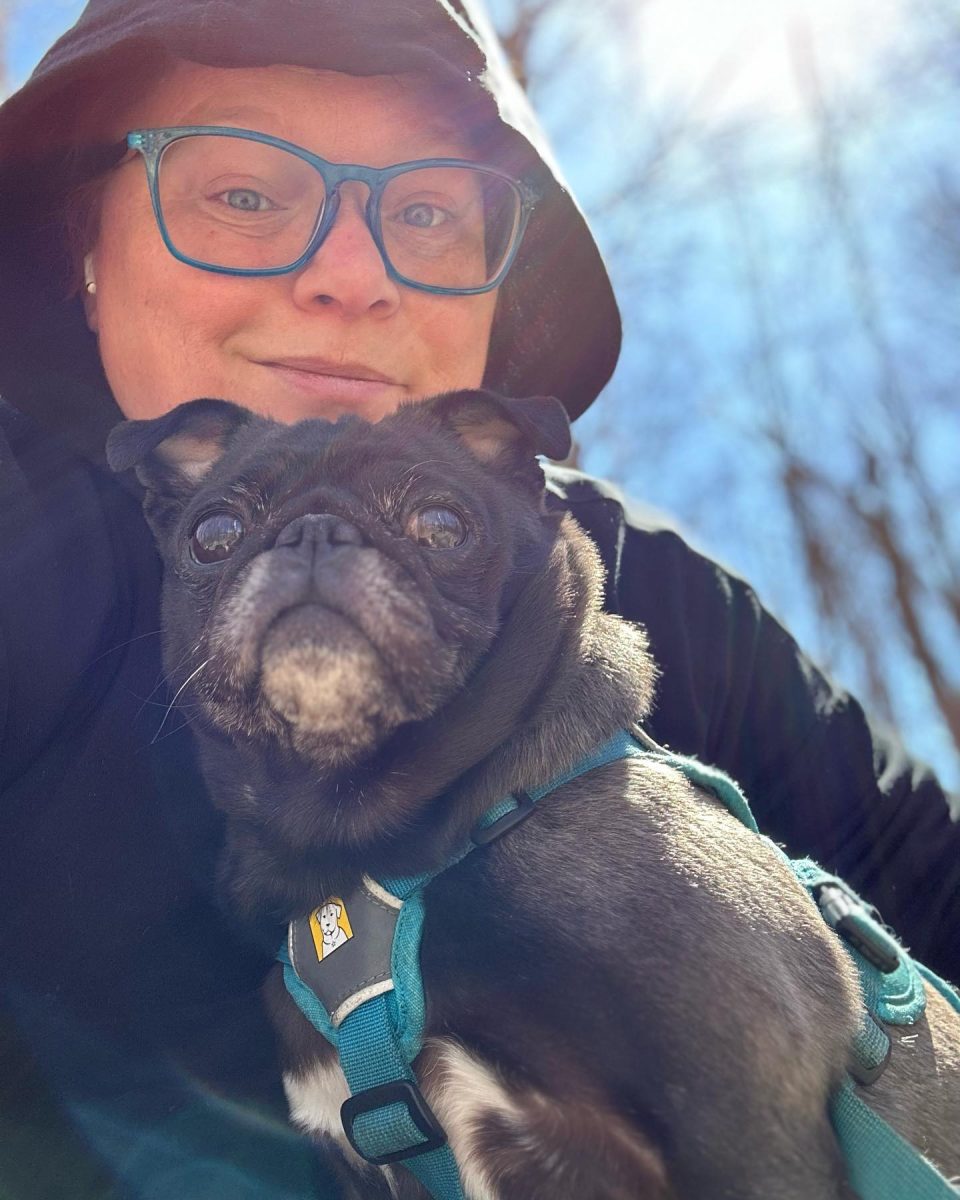If you’re an AuADHD (Autism + Attention Deficit Hyperactivity Disorder) individual like I am (or just have ADHD), I see you! I see the struggle to keep up with deadlines, knowing you have to do something but just being unable to, banging your head against a wall because you know you have to do something but it’s just not happening for you, and oh my gods, it’s now 4:11 a.m. and now you gotta rush things!
Well, I’m with you. I literally am writing this article four hours before it’s due and honestly, mate, yeah, it’s not fun when you are like this. And that’s just scratching the surface.
See, the truth is that the society we live in is not built with us in mind. Our disorders are categorized as “learning disabilities,” when we have no problem learning, we just have problems with time management and a whole host of other issues. The biggest things I hear ADHDers complain about regarding their disorder is the fact that they put off their important tasks in favor of doing something else, as well as a lack of motivation.
This is because, if you have ADHD, your brain is wired to go after what gives you the hardest dopamine rush. Doing something spontaneously or finding something new to do is what we strive for. However, after a while, we lose interest, and we no longer get that brain-rushing dopamine hit we crave. It’s why social media is so addicting to people with ADHD, because social media preys on our need for constant stimulation. So, when we get to doing tasks like homework or cleaning our rooms, or any number of chores, we lose motivation because it’s not going to give us that energy. Ultimately, the biggest challenge for ADHD folks is starting something. In my experience, starting the process of something (like writing an article, for example, wink wink, nudge nudge) is hard because my brain doesn’t know where to begin and loses motivation to do it, period. But once I start something, it’s much easier.
A lot of ADHDers struggle with passive processing. What is passive processing? Passive processing is the ability to retain information without actively needing to memorize it. Hayley Honeyman (a YouTuber with ADHD who I will be referencing a lot here) says that passive processing is what most people who are neurotypical do. A person who can passively process information can organize themselves to prioritize tasks and get them done on time. However, if you are neurodivergent (which is a broader term for people who have ADHD or other mental disorders), you probably tend to do a lot of active processing instead. Active processing is when you need to actively retain information to remember it. So, your brain has a difficult time organizing and prioritizing tasks, purely because a task can seem overwhelming due to the actual steps you need to take to complete said task.
For example, if you want to wash the dishes, a person who passively processes information can just do the dishes because their brains associate it with one task. If you actively process, however, your brain gets overwhelmed because you don’t know where to start, and instead you have to intentionally make a list of what to do when washing the dishes: run the water, put detergent on the sponge, scrub the plate in the sink, rinse, and then place the plate in the tray to dry. Forgetfulness is also highly likely due to the lack of passive processing. The brain gets easily distracted and can’t remember what needs doing.
Maybe we should call ADHD something else because what some of us struggle with isn’t staying in place or paying attention, it’s self-organizing and prioritizing.
If you find yourself relating to that experience, there is a way to cheat the system. Here are some handy methods I’ve compiled that are easy to digest, and all in one place for you!
Traffic Light Routines
At a traffic light, you have a green light, a yellow light, and a red light. With this method, the colors are associated with your energy levels. A green light is a day when you have energy to actually do things, you feel really motivated, and you can accomplish most, if not all, of your tasks. A yellow light is a day when you have medium energy levels, you are slowing down. You probably won’t get all your tasks done. A red light is a day when you feel absolutely drained, with next to no energy. You can only do the minimum.
While people who are neurotypical can have daily routines and get all the things they need to do done, people with ADHD can’t really function like that because we have our difficulties, and our energy levels and levels of processing information can change very quickly. The Traffic Light method is a way to help circumvent the challenge of sticking to a routine by creating separate routines for each light/day with differing energy levels. What is important to keep in mind is that you don’t have to plan out an entire routine with this. You can just write down what you can accomplish during each day and try to stick to that. So, if the idea of making three distinct kinds of routines seems like something you can manage, go for it!
I know that on green days, I can get all my homework done between classes and have time for drawing my characters/comic. Meanwhile on yellow days (which is most days), I can only do maybe half of my homework and some drawing, or none. And on red days, I get nothing done, and I end up scrolling on social media or sleeping when I can. This method can also possibly help folks with chronic fatigue, but that is purely my own speculation as someone struggling with that disorder as well.
I could not find a proper source for where this technique came from as a lot of people have written or talked about it. Hayley Honeyman calls it the “Honeyman Technique,” but it existed before she made her video on the subject, and people use the term “traffic light technique” for different things.
Pomodoro
The Pomodoro method is an excellent way for a person to get work done and manage time. It goes as follows: you have 25 minutes of work, followed by a 5-minute break, and after four consecutive work intervals, you take 15-30 minutes for a break. A pomodoro is one of these 25-minute work intervals. The term pomodoro means “tomato” in Italian! It is also a great way of avoiding burnout and mental fatigue. The technique was invented by a college student – much like us – named Francesco Cirillo, in the 1980s.
So how does one properly do a pomodoro? First, it is important to compile a list of things you need to do. It doesn’t have to be a detailed list, but put down what you know you need to do. The second most important thing is to use a timer. A timer on your phone works. However, if you can get your hands on one, I would recommend getting an analog timer. If you have your phone readily available, it can be very easy to become distracted, so an analog old-fashioned timer will not be as distracting.
During a pomodoro, it is expected that you do one task. If you do not complete said task in 25 minutes, that’s okay. Note down where you finished, take your break, and then move on to the next task. The idea is that you don’t get overwhelmed with just one task over a few hours. Do what you can in that time, jot it down, and then move on. Once you’ve completed four pomodoros, take the 15- to 30-minute break, and then come back.
If you get distracted during a pomodoro, take your 5-minute break, and start over. The idea here is not to shame yourself for getting distracted, because sometimes distractions happen. You should try and minimize them as much as possible. If an unavoidable distraction does happen, note that down and make changes to help avoid future distractions.
The final tip for this method is that, if you complete your task before the 25 minutes are up, take the rest of the time to overlearn. Read something interesting, improve a skill, or do something simple that helps with your productivity. I can say from personal experience that I feel great if I can do something else in that time. I tend to write or draw if I complete a task before the pomodoro ends.
If you want to read more about pomodoros, here is a helpful link where I got a lot of this information from: todoist.com/productivity-methods/pomodoro-technique.
Body Doubling
If you have a friend, or know someone online, who also struggles with staying on task, body doubling is an excellent way of focusing. Body doubling is when you and the other individual both have tasks to do but find that sitting and doing tasks together helps you stay motivated. The idea behind it is accountability. The person sitting across from you or on your screen is trying to do a task and so are you, and you both hold each other to the same standard. Alongside that, it’s important to establish times when you check in on each other’s progress and take five minutes to tell each other where you are at.
It’s also worth noting that body doubling also works well with the Pomodoro technique, so you can incorporate them together if you really want to. If you don’t have a friend who you think can keep you accountable, there are plenty of online sites that do body doubling.
I am thinking of potentially establishing a club or setting up times to meet to either do body doubling or the Pomodoro technique. If interested, email me at [email protected].
Pocket Notebooks
This might seem like a weird one, but I promise it’s genius!
Recently I discovered several YouTubers who use this method to note down important things or just any idea that pops into their minds. Austin Schrock made an excellent video talking about the benefits of having a pocket notebook on you. These benefits include the lack of distractions a phone would have, it fits into your pocket, and is super easy to use.
I tried this method for myself to note down ideas, and to write down things I needed to do. I bought a set of three from the Dollar Tree for $1.25. I started carrying a pen and notebook around with me everywhere. In just a week and a half, I’ve written down ideas for stories which I would have forgotten otherwise, drawing ideas, recommendations from people, lists of things to do, interview questions, and I’ve even doodled in it too.
These things are super lightweight, easily fit into your pocket, and with some minor exceptions, you can use it anywhere.
So, what does this have to do with ADHD? Well, everything!
I think a lot of us are starting to become seriously fatigued by our smart devices like smartphones, laptops, etc. Especially with social media, it can be so difficult to properly focus on anything, really. Hell, if I had it my way, I would change my phone to an old-school flip phone. Technology is great for a variety of reasons, of course, but with the rising trend of people returning to analog devices and objects, I think we’re tired of the constant new things being thrown our way – especially since most modern-day stuff is expensive garbage that will die within two to three years, and isn’t made with any real love or care.
For people with ADHD, our phones can be majorly distracting to us. I personally think they have made us more and more reliant on them for our dopamine. Major companies that own social media apps/websites are capitalist pigs who prey on our constant engagement and literally have developed techniques to keep us scrolling. It’s bad for the neurodivergent folks and it’s bad for the neurotypical folks.
This is why a pocket notebook is genius. There are no advertisers trying to shill things to you, no popping up messages, no tracking devices stealing your data and selling them to the highest bidder, and – most important for us with ADHD – no distractions. You can just plop open a notebook, write some stuff down, and pocket it before moving on.
Obviously, not all these techniques work for everybody, and there is more to each technique/method that I encourage you to look over for yourself. Every single experience with ADHD is different and not everybody works the same. As young people attending college, I think now is a great time to start thinking about ways to solve your problems rather than linger on them. It’s easy to feel ashamed and tired, and trust me, I get it. Having ADHD, no matter what some people might say, is a disability which needs to be managed. But it is okay to fail, it is okay to make mistakes and mess up, but we also need to remember to pick ourselves back up, and keep trying, especially if it is for the purpose of doing something you love.
Give yourself room to breathe and be open to new experiences. And if any of these tips sound overwhelming to you, that’s okay. Ask a friend to help you figure out your plan, or if you can, speak to a therapist about how to approach these topics. There are always solutions to problems, and I think people tend to forget that. Having ADHD does not make you a mess you cannot clean. You can clean up the mess, but it won’t be the same way someone else cleans up. And that’s okay.
Categories:
ADHD management tips
Sage Mkazas Selec
•
February 20, 2024






